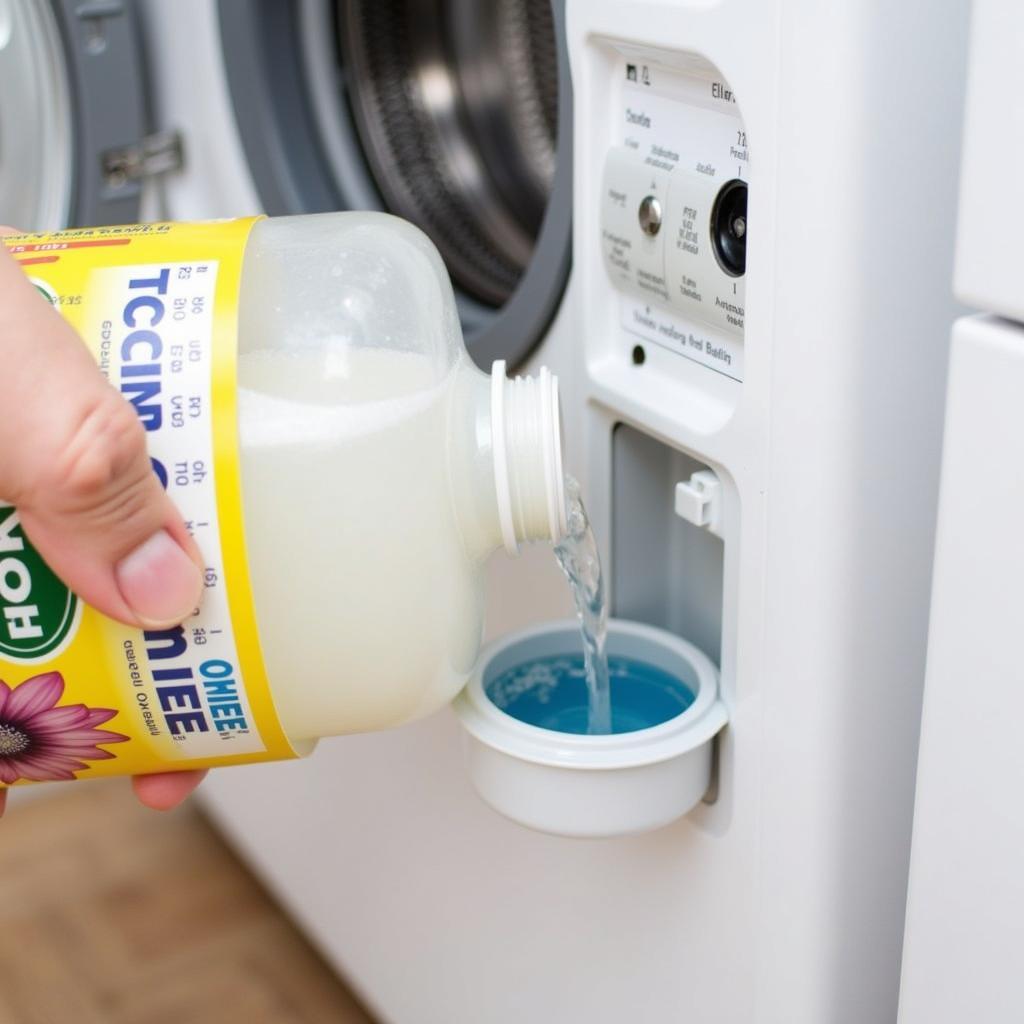Preventing color bleeding during laundry is key to maintaining vibrant clothes and avoiding unfortunate dye transfers. Whether it’s a new red shirt staining your whites or a dark pair of jeans fading onto lighter fabrics, color bleeding can ruin your favorite garments. This guide provides effective strategies to keep your colors vibrant and your whites bright.
Understanding the Causes of Color Bleeding
Several factors contribute to color bleeding. Excess dye, hot water temperatures, and the type of fabric all play a role. New garments, especially brightly colored ones, often contain excess dye that isn’t fully bonded to the fabric. Hot water can loosen this dye, making it more likely to bleed onto other items. Certain fabrics, like cotton and linen, are more prone to releasing dye than synthetics. Overloading the washing machine restricts water circulation, preventing adequate rinsing and increasing the chances of color transfer.
Effective Methods to Prevent Color Bleeding
Sorting Your Laundry: The First Line of Defense
Sorting clothes by color is fundamental to preventing color bleeding. Separate whites, lights, darks, and delicates into distinct piles. This simple step drastically reduces the risk of dye transfer. Within each color category, pay attention to fabric type as well. For example, separate new towels from older ones, even if they’re the same color.
Cold Water Wash: A Simple yet Powerful Solution
Washing clothes in cold water is one of the most effective ways to prevent color bleeding. Cold water minimizes dye release and helps maintain the vibrancy of your clothes. For most garments, cold water is sufficient for effective cleaning and prevents the risks associated with hot water washing.
Vinegar: A Natural Dye Fixative
White vinegar acts as a natural dye fixative, helping to set the color in your fabrics. Add a cup of white vinegar to the rinse cycle to prevent color bleeding and brighten your clothes. Vinegar also helps to remove any residual detergent, leaving your clothes softer and cleaner.
 Vinegar as a Dye Fixative in Laundry: Pouring Vinegar
Vinegar as a Dye Fixative in Laundry: Pouring Vinegar
Salt: Another Natural Ally
Similar to vinegar, salt can help to set dye and prevent color bleeding. Add half a cup of salt to the wash cycle, especially for new garments, to lock in the color and prevent it from running. This simple trick can significantly reduce dye transfer and protect your clothes. You can learn more about preventing color bleeding during washing by checking out this article: how to keep colors from bleeding in the washer.
Color Catcher Sheets: An Added Layer of Protection
Color catcher sheets act like magnets, attracting and trapping loose dyes in the wash water. These sheets are particularly useful when washing mixed loads of lights and darks, providing an extra layer of protection against color bleeding.
Turn Clothes Inside Out: Minimizing Friction and Dye Rubbing
Turning clothes inside out, especially dark or brightly colored garments, minimizes friction and reduces the likelihood of dye rubbing off onto other items. This simple practice can significantly extend the life and vibrancy of your clothes. This is especially useful for preventing color run in shirts, and you can learn more about how to keep the original color in how to keep color on color run shirt.
Testing for Colorfastness: A Precautionary Measure
Before washing a new garment, especially a brightly colored one, test it for colorfastness. Dampen a small, inconspicuous area of the fabric and blot it with a white cloth. If any dye transfers to the cloth, the garment is likely to bleed and should be washed separately, preferably by hand. For information on how to remove color bleeding from white clothes, visit how to remove color bleeding from white clothes.
Conclusion
Keeping colors from bleeding in the wash requires a combination of proactive measures and preventative strategies. By following the tips outlined above, you can effectively protect your clothes, maintain their vibrancy, and avoid the frustration of dye transfer. Remember to always sort your laundry, wash in cold water, and utilize natural dye fixatives like vinegar and salt. For those interested in natural methods to remove color bleeding, this article offers helpful advice: how to remove color bleeding from clothes naturally. Implementing these practices will ensure your clothes look their best for years to come. This article also offers useful insights on how to keep colors from bleeding in the washer.
FAQ
- Why do some clothes bleed color more than others?
- Can I use hot water to wash clothes that bleed color?
- Are color catcher sheets reusable?
- How can I remove color stains caused by bleeding?
- What is the best way to wash delicate fabrics prone to bleeding?
- How often should I use vinegar or salt to prevent color bleeding?
- Is it necessary to test for colorfastness every time I wash a garment?
For further assistance, please contact us at Phone: 0373298888, Email: [email protected], or visit our address: 86 Cầu Giấy, Hà Nội. Our customer service team is available 24/7.
